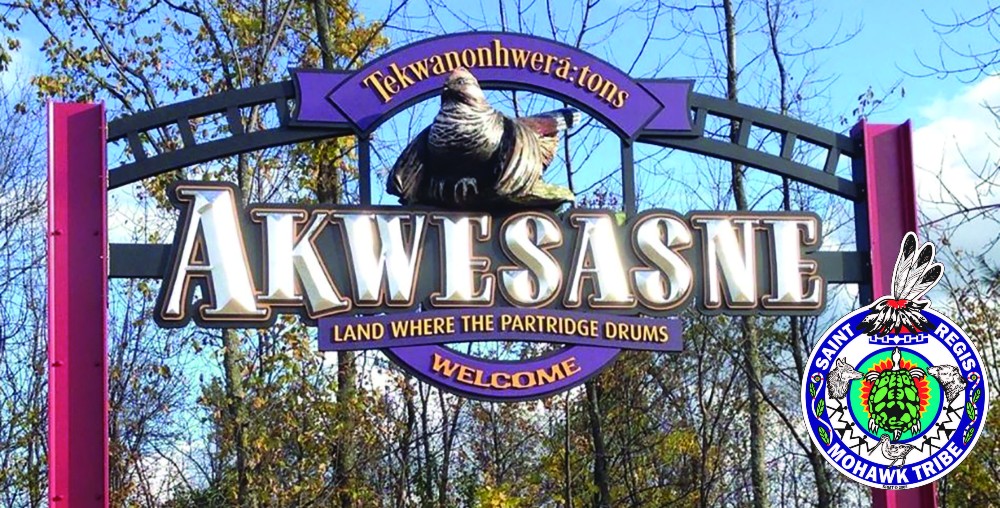
- Details
- By Darren Thompson
Yesterday, U.S. District Judge Lawrence Kahn wrote in a summary judgment ruling that New York State’s purchase of the Saint Regis Mohawk Tribe’s (SRMT) reservation lands in the 1800s violated the federal Non-Intercourse Act. The lands purchased by the state are known as the “Hogansburg Triangle” and is in the center of the reservation reserved for use by SRMT tribal members in a 1796 Treaty, which was ratified by U.S. Congress on May 31, 1796.
The decision is considered historic by the Tribe. “The Saint Regis Mohawk Tribal Council is pleased to report that the decades-long dispute over the reservation boundary has been decided upon by the United States District Court for the Northern District of New York,” said the SRMT in a press release yesterday.
New York State purchased nearly 2,000 acres of reservation land from the Tribe in 1824 and 1825, without the presence of a federal commissioner or a subsequent legislation approving the transfer of title. The Non-Intercourse Act was one of the U.S. Government’s adopted six federal statutes beginning in 1790 and ending in 1834 to regulate commerce with Indian Nations and to clearly establish the rules for the purchase of tribal property. The act specified that only legislation ratified by the U.S. Congress could transfer title of lands to a purchaser.
Want more Native News? Get the free daily newsletter today.
“To say that we are pleased is an understatement,” said Saint Regis Mohawk Tribal Chief Beverly Cook of yesterday’s court decision. “We should all be proud of the perseverance that our recent and ancient ancestors displayed, who stood fast in their determination to protect our lands.
“The process will continue to require patience and critical thinking, as we seek to unwind the many complexities of a final remedy and settlement of our land claim,” added Cook.
Yesterday’s ruling settled the State and County counterclaims that the Tribe’s reservation was disestablished or diminished by later treaties. Yesterday’s ruling reaffirms that the 1796 Treaty boundaries remain in place and encompass, not only the Hogansburg Triangle, but the Massena Mile Square, the Fort Covington Mile Square and adjacent town, and the Grasse River meadows areas, all set aside in the 1796 Treaty.
Judge Kahn’s summary did not include a remedy to rectify or correct the illegal taking of reservation lands by New York State, however.
“We still haven’t heard from the County or the State on yesterday’s ruling,” said SRMT Communications Director Brendan White to Native News Online.
More Stories Like This
50 Years of Self-Determination: How a Landmark Act Empowered Tribal Sovereignty and Transformed Federal-Tribal RelationsNavajo Nation President Nygren Files in Court to Halt Removal Legislation
Alcatraz Sunrise Gathering Marks 50 Years of Indigenous Activism
Navajo Nation Vice President Distances Herself From President After Removal Resolution
Navajo Council Speaker Introduces Legislation to Remove Navajo Nation President, Vice President Amid Ethics Complaint
Help us tell the stories that could save Native languages and food traditions
At a critical moment for Indian Country, Native News Online is embarking on our most ambitious reporting project yet: "Cultivating Culture," a three-year investigation into two forces shaping Native community survival—food sovereignty and language revitalization.
The devastating impact of COVID-19 accelerated the loss of Native elders and with them, irreplaceable cultural knowledge. Yet across tribal communities, innovative leaders are fighting back, reclaiming traditional food systems and breathing new life into Native languages. These aren't just cultural preservation efforts—they're powerful pathways to community health, healing, and resilience.
Our dedicated reporting team will spend three years documenting these stories through on-the-ground reporting in 18 tribal communities, producing over 200 in-depth stories, 18 podcast episodes, and multimedia content that amplifies Indigenous voices. We'll show policymakers, funders, and allies how cultural restoration directly impacts physical and mental wellness while celebrating successful models of sovereignty and self-determination.
This isn't corporate media parachuting into Indian Country for a quick story. This is sustained, relationship-based journalism by Native reporters who understand these communities. It's "Warrior Journalism"—fearless reporting that serves the 5.5 million readers who depend on us for news that mainstream media often ignores.
We need your help right now. While we've secured partial funding, we're still $450,000 short of our three-year budget. Our immediate goal is $25,000 this month to keep this critical work moving forward—funding reporter salaries, travel to remote communities, photography, and the deep reporting these stories deserve.
Every dollar directly supports Indigenous journalists telling Indigenous stories. Whether it's $5 or $50, your contribution ensures these vital narratives of resilience, innovation, and hope don't disappear into silence.
 The stakes couldn't be higher. Native languages are being lost at an alarming rate. Food insecurity plagues many tribal communities. But solutions are emerging, and these stories need to be told.
The stakes couldn't be higher. Native languages are being lost at an alarming rate. Food insecurity plagues many tribal communities. But solutions are emerging, and these stories need to be told.
Support independent Native journalism. Fund the stories that matter.
Levi Rickert (Potawatomi), Editor & Publisher
